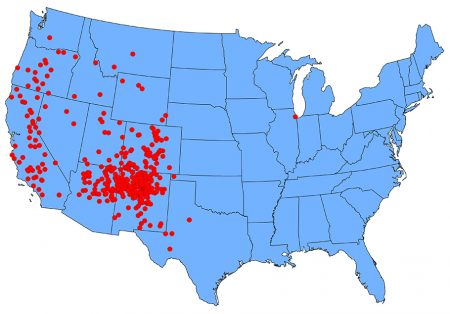Flea-Borne Diseases
*Flea-borne diseases are rare in CT.*
Flea-Borne (murine) Typhus
Flea-borne (murine) typhus, is a disease caused by a bacteria called Rickettsia typhi. Flea-borne typhus is spread to people through contact with infected fleas. Fleas become infected when they bite infected animals, such as rats, cats, or opossums. When an infected flea bites a person or animal, the bite breaks the skin, causing a wound. Fleas poop when they feed. The poop (also called flea dirt) can then be rubbed into the bite wound or other wounds causing infection. People can also breathe in infected flea dirt or rub it into their eyes. This bacteria is not spread from person to person. Flea-borne typhus occurs in tropical and subtropical climates around the world including areas of the United States (southern California, Hawaii, and Texas). Flea-borne typhus is a rare disease in the United States.
Plague

Reported Cases of Human Plague – United States, 1970-2017 (CDC)
Plague is a disease that affects humans and other mammals and was first introduced into the United States in 1900, by rat–infested steamships that had sailed from affected areas, mostly from Asia. Epidemics occurred in port cities. The last urban plague epidemic in the United States occurred in Los Angeles from 1924 through 1925.
It is caused by the bacterium, Yersinia pestis. Humans usually get plague after being bitten by a rodent flea that is carrying the plague bacterium or by handling an animal infected with plague. Plague is infamous for killing millions of people in Europe during the Middle Ages. Today, modern antibiotics are effective in treating plague. Without prompt treatment, the disease can cause serious illness or death.
Presently, human plague infections continue to occur in rural areas in the western United States, but significantly more cases occur in parts of Africa and Asia.
In this Section
- Tick-Borne Diseases
- Mosquito-Borne Diseases
- Rabies
- Ebola Virus Disease
- Coronaviruses
- Flea-Borne Diseases